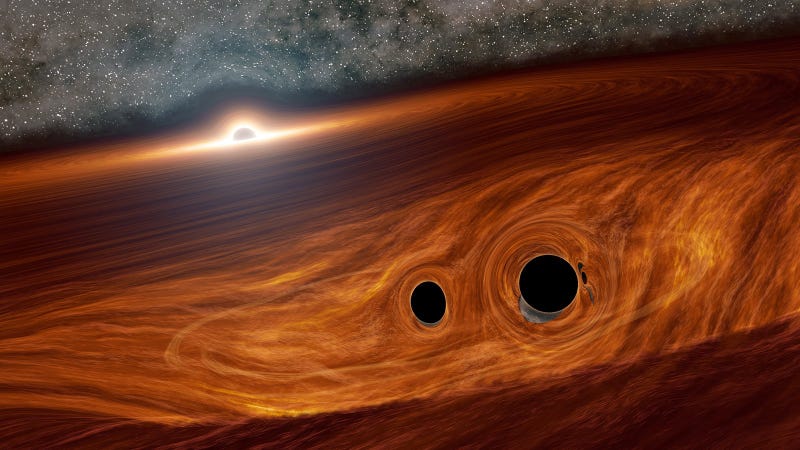No space-based gravitational wave observatory exists…yet. But that hasn’t stopped a team of astronomers from demonstrating how the gravitational universe might look, using simulated data to create a “synthetic gravitational sky.”
Gravitational waves are perturbations in spacetime that were predicted by Einstein in his theory of general relativity; as Einstein described them, the waves are changes to a gravitational field that travel at the speed of light. That sounds like a disruption you would feel. However, these ripples—observed for the first time in 2015 by LIGO, an interferometer observatory, a century after Einstein’s predictions—are passing through us at all times, stretching and squeezing our bodies on an imperceptible level.
At least, imperceptible for now. Earlier this year, a consortium of gravitational wave collaborations independently published data that strongly suggested the presence of a gravitational wave background, or the constant murmur of gravitational waves that permeates the universe. You can think of the gravitational waves spotted by LIGO as specific waves lapping up on our planetary shores, while the signal detected by the collaborations uses light timed from rapidly spinning stars called pulsars to identify gravitational ripples, is more akin to the surface of the gravitational ocean.
In the new visualization, a team of astronomers simulated data from gravitational waves to show how space-based gravitational wave observatories might see our galaxy. Bright spots in the visualization indicate stronger gravitational wave signals, and brighter spots show areas with a higher frequency. The inset graph (of the visualization) shows the gravitational wave signal strength, frequency and the limit of the Laser Interferometer Space Antenna (LISA) mission, a planned gravitational wave observatory.
The visualization is based on simulated data from stellar-mass black hole mergers, neutron star mergers, and the mergers of neutron stars and black holes. Neutron stars are very dense stellar remnants; scientists confirmed detections of a neutron star-black hole merger for the first time in 2021, from an event that occurred one billion years ago.

“Binary systems also fill the Milky Way, and we expect many of them to contain compact objects like white dwarfs, neutron stars, and black holes in tight orbits,” said Cecilia Chirenti, a researcher at the University of Maryland at College Park and NASA’s Goddard Space Flight Center, in a NASA release. “But we need a space observatory to ‘hear’ them because their gravitational waves hum at frequencies too low for ground-based detectors.”
No space-based gravitational wave observatory exists yet, but not for long. Last year, LISA passed a feasibility review, taking it one step closer to an eventual launch. LISA will consist of three spacecraft that will orbit the Sun in a triangular formation, making an interferometer in space with arms 2.41 million kilometres long.
LISA is expected to launch in 2037, which is relatively soon as far as large NASA missions are concerned. It puts the observatory in the same timeframe as the Habitable Worlds Observatory, a next-generation telescope that will try to find worlds like ours, capable of fostering life as we know it.
The future of science in space is bright, but scientists want to see that brightness at every wavelength—including gravitational ones.
